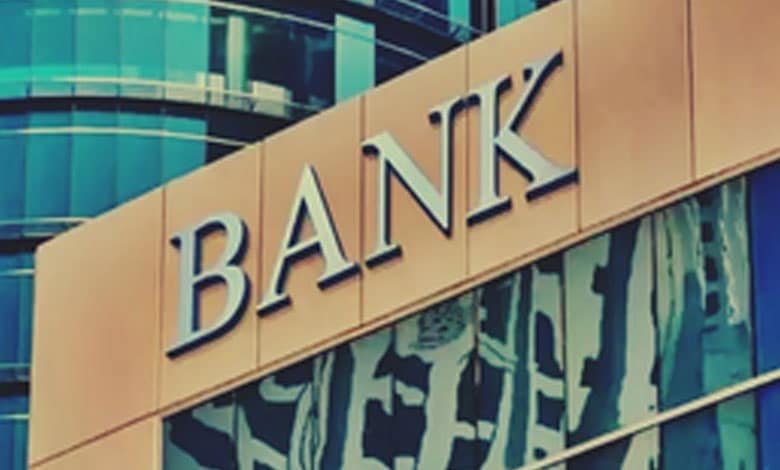Pan India
Indian Banks Likely to See Further Decline in NPAs by March 2025: Fitch Report
Indian banks’ NPA ratio is projected to decline to 2.4% by March 2025, according to Fitch. Despite rising stress in unsecured retail loans, strong recoveries, write-offs, and robust economic growth support financial stability.

New Delhi: The gross non-performing assets (NPAs) ratio of Indian banks is projected to decline by another 0.4 percent, reaching 2.4 percent by March 2025, according to a recent report by Fitch Ratings.
The report also forecasts a further reduction of 0.2 percent in the next financial year, highlighting a positive trend in the financial health of Indian banks despite rising stress in unsecured retail loans.
Table of Contents
Key Highlights from the Fitch Report
- Decline in NPAs Continues:
The gross NPA ratio, which stood at 2.6 percent in the first half of FY25 (1HFY25), is expected to improve further, driven by strong economic growth, recoveries, and loan write-offs. - Rising Stress in Retail Loans:
- Stress in retail lending is increasing, particularly in unsecured personal loans and credit card borrowings.
- Unsecured loans below $600 (approximately ₹51,000) are showing higher default rates, with riskier lending largely concentrated among Non-Banking Financial Companies (NBFCs) and fintechs targeting low-income borrowers.
- Banks’ Risk Exposure Remains Limited:
While large Indian banks have limited proportional exposure to unsecured retail loans compared to the overall financial system, they may still face indirect risks through funding provided to NBFCs and fintechs. - RBI’s NPA Projections:
The Reserve Bank of India (RBI) anticipates that the impaired-loan ratio will bottom out in FY25 before marginally increasing to around 3 percent by FY26. - Growth in Unsecured Lending Slows:
- Unsecured personal loans and credit card borrowings grew at a compound annual growth rate (CAGR) of 22 percent and 25 percent, respectively, over the three years leading to FY24.
- The growth pace slowed to 11 percent and 18 percent year-on-year (Y-o-Y) in 1HFY25 following the RBI’s decision to increase risk weights for unsecured lending.
- Household Debt Remains Low:
India’s household debt-to-GDP ratio stood at 42.9 percent as of June 2024, significantly lower than many emerging markets in the Asia-Pacific region. Despite this, unsecured loans accounted for roughly 52 percent of new bad retail loans in 1HFY25, signaling rising stress in this segment.
Factors Supporting NPA Reduction
- Recovery and Write-Offs:
Recoveries from bad loans and write-offs have significantly contributed to the improvement in NPA ratios. - Focus on Secured Lending:
Banks are increasingly prioritizing secured loans, thereby reducing exposure to high-risk unsecured credit. - Economic Growth:
India’s robust economic performance has played a crucial role in improving the repayment capacity of borrowers and reducing overall loan defaults.
Also Read | Kotak Mahindra Bank acquires Standard Chartered India’s personal loan biz for Rs 3,330 cr
Challenges Highlighted in the Report
- Concentration of Risk in Low-Income Borrowers:
A significant portion of consumer credit is held by borrowers without formal income disclosure or those in the low-income bracket. This group constitutes over one-third of outstanding consumer credit, posing higher default risks. - Indirect Exposure via NBFCs and Fintechs:
Banks funding NBFCs and fintechs are indirectly exposed to the risks associated with unsecured retail lending. These entities often cater to low-income borrowers with limited repayment capacity. - Emerging Stress in Retail Credit:
Retail loans, particularly unsecured personal loans and credit card debt, are becoming a growing contributor to new bad loans, reflecting a shift in lending stress within the financial system.
Policy Measures and Implications
- Increased Risk Weights:
To mitigate risks, the RBI has increased the risk weights for unsecured loans, which has slowed the growth of such lending. - Focus on Financial Stability:
With the improving NPA ratios, the Indian banking system is expected to maintain its stability. However, sustained efforts will be needed to address rising stress in unsecured retail lending. - Growth Opportunities:
Fitch noted that India’s overall financial system remains resilient, with ample opportunities for growth in secured lending and infrastructure development.
